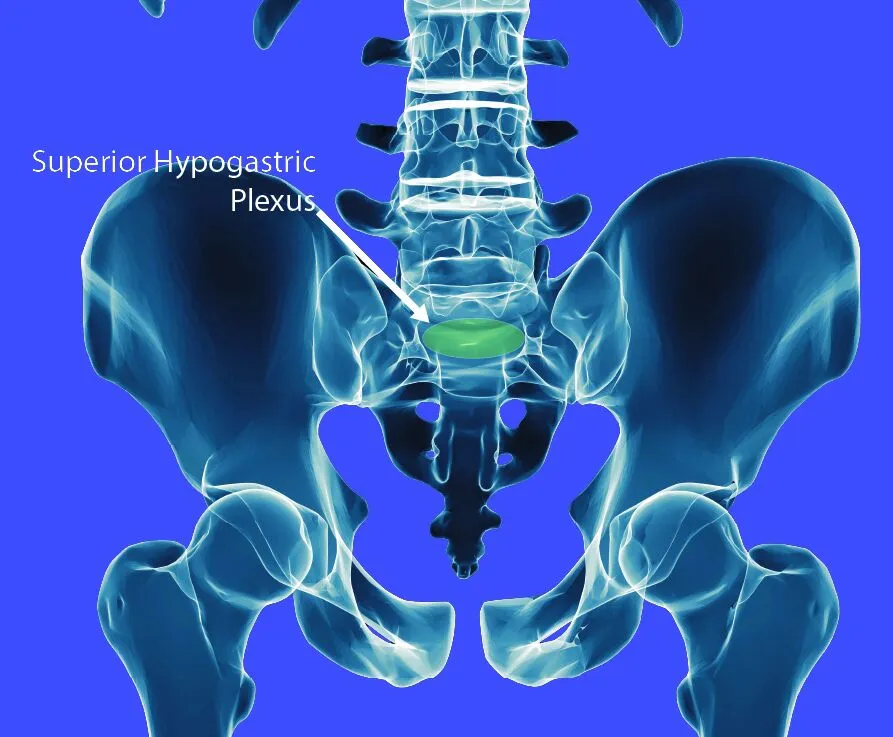Hypogastric Plexus Block
The hypogastric plexus is a network of nerves located in the lower back, in front of the spine, that transmits pain signals from the pelvic organs, including the bladder, uterus, prostate, rectum, and other structures. A Hypogastric Plexus Block (HPB) is a minimally invasive procedure where local anesthetic, sometimes combined with steroids or neurolytic agents, is injected around these nerves to block abnormal pain transmission.
This procedure is particularly effective for managing chronic pelvic pain, cancer-related pelvic pain, or nerve-related pain arising from pelvic organs. By reducing pain signals, it helps improve mobility, sleep, and overall quality of life.

Signs & Symptoms Where a Hypogastric Plexus Block May Help
You may be a candidate for this procedure if you experience:
Chronic pelvic pain not relieved by medications
Pain from gynecological cancers (cervix, uterus, ovary)
Pelvic pain from colorectal or bladder cancer
Endometriosis-related pelvic pain
Pain following pelvic surgeries or radiation
Pain in the rectum, bladder, prostate, or perineum
Diagnostic Procedure
Before recommending a Hypogastric Plexus Block, Dr. Manish De follows a structured, evidence-based approach to ensure patient safety and effectiveness:
Comprehensive Medical History & Examination – To assess pain characteristics and underlying causes.
Imaging Studies – MRI, CT scan, or ultrasound may be advised to evaluate pelvic structures.
Test Block – A trial with short-acting anesthetic may be performed first to gauge response.
Fluoroscopic or CT Guidance – Ensures precise needle placement for accurate medication delivery and minimal risk.

Benefits of a Hypogastric Plexus Block
- Significant reduction in chronic pelvic pain
- Improved ability to sit, walk, or perform daily activities
- Reduced reliance on opioid pain medications
- Enhanced comfort in cancer-related pelvic pain
- Can be repeated or made long-lasting depending on response

